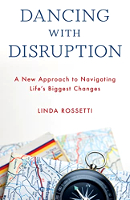
Image by Sasin Tipchai
Who am I? We often ask ourselves such a question in conjunction with an absence: the absence of a once familiar sense of self or when we operate without familiar identity markers, like an occupation or a relationship or a physical capability.
Who am I in the aftermath of a breakup? Who am I without this job that defined a big part of my existence for so long? Who am I if I am no longer physically able to do the kind of things I am used to doing?
Have you ever asked yourself such questions?
Like many, I believed that new forms of self-definition emerged from lightbulb moments or occurred on the heels of something unexpected, like winning the lottery or getting accepted to a selective training program.
What I learned was markedly different. The most consistently reliable way to generate a new self-definition is to interrogate the stories we tell about ourselves and recalibrate the role that our own truth plays in those narratives. As such, we will work on storytelling and learn how to turn up the volume on our own voices.
A New Story Structure
As we grow, the stories we tell about ourselves serve as a discovery platform for new self-concepts. Our stories can do the hard work of helping us figure out what to do next.
Imagine you are tasked with introducing yourself to someone for the first time. Would your first instinct be to rely on a story that features events or circumstances of your life in order of occurrence? If so, you would not be alone. Chronology is by far the most common narrative architecture found in my work.
While common, a chronological story structure can work against us when we grow. It often leaves our listeners off at the moment of a disruptive break, emphasizing uncertainty. It may not surprise you that we reach for the familiarity of this type of structure at times of instability.
While comforting, there is risk in relying on chronological narratives. We are the first and most important audience for our narratives. We internalize these stories and their messages. As such, a reliance on a narrative that emphasizes uncertainty can—in a very insidious fashion—work against us.
We can change our story’s architecture away from chronology and toward a structure that is built around what holds value and meaning to us. For our purposes, we will call this a value-based structure.
Building Our Narrative Around Values
Narratives built around values can feature anything under the sun: a special relationship, a way of being, a curiosity, a faith, or so much more. By relying on such a structure, we engage who we are differently. By relying on this structure, we are turning up the volume on our voices.
By referencing voice here, I am not referring to anything audible. I am instead referring to voice as a representation of our truth, our essence. By using a value-based structure, we connect more directly to internal versus external influences. We reduce our susceptibility to uncertainty. And, given that we are our first audience, we open ourselves us up to deeper self-awareness, one that can lead to new, more expansive questions.
What holds value and meaning to you? For many, these concepts may be on the tip of their tongue. For others, they can be inaccessible or only vaguely familiar. The section that follows serves as a primer on values and meaning for those who find themselves in need of a quick refresher.
If you find yourself unsure of what holds value or meaning to you, do not fret. Spend the time to turn your curiosity there. Our work here can help reacquaint you with what you hold true or move you further along in knowing your values.
A Primer on Values and Meaning
Values and meaning play a vital role in our transformation. Through our connection to these, we begin new conversations with ourselves.
Values are what we believe to be important. We define them on our own even though we shape them, in part, through cues from our surroundings.
What do you value? What are the most important values you hold now?
I invite you to reflect on your values and consider the connection between values and meaning. I link the two because both play a fundamental role in transformation, a process that invites us to come into our voices more fully.
Values are a subset of the meaning we hold in our lives. I love the words of John Gardner, founder of CommonCause (commoncause.org), in his definition of “meaning”:
Meaning is something you build into your life. You build it out of your own past, out of your affections and loyalties, out of the experience of humankind as it is passed on to you, out of your own talent and understanding, out of the things you believe in and the people you love, out of values for which you are willing to sacrifice something.
Meaning can encompass anything you can imagine and commit yourself to. The one thing to keep in mind is that all people, regardless of their circumstances, define meaning in their own way. Meaning is something everyone— regardless of their socioeconomic circumstances or how they spend their time—must figure out on their own. There is also no prescribed or predetermined “right” meaning.
We all construct and hold our own meaning—everyone, with no exceptions—a concept that guides who we are, how we live our lives, and what growth will entail in our experience.
A Reflection: Your Story
This Reflection invites us to reconstitute our stories by using values instead of chronology as the story’s architecture. I have found over the last decade that this is one of the surest routes to redefining identity in growth. It is a reliable, fun discovery platform that can be used again and again to explore new self-concepts.
This tool will ask you to reflect on familiar stories you tell about yourself, and it will also direct you to interrogate those stories in a search for important clues. The work here helps you see yourself in a new light and consider how much of yourself you are willing to let others see or experience.
Step 1: Tried-and-True
Take a moment to write a chronological introduction for yourself that you might use when meeting someone for the first time. Please try to work with a story that touches upon an area of your identity involved in your transformation.
For example, “Wilma and I met five years ago when we both volunteered at a Habitat for Humanity project outside of Atlanta. We dated for a few years and then she moved away. We got back in touch a year ago when she visited her sister who now lives in my building. We were married three weeks ago.”
Step 2: The Limits We Set for Ourselves
Write an internal narrative that you have told yourself but never shared with others. Keep in mind, internal narratives can often be self-limiting.
For example, “My hair is so thin, I am unattractive.”
Step 3: Value Narrative
Choose something you value in your life to work with in this exercise. It does not need to be the most important value in your life. Rewrite your story from Step 1, only this time, replace chronology with the value you have chosen to work with. Tell the story through the lens of this value.
For example, “Wilma and I are soulmates; we are both so committed to social justice. I knew I was going to marry her the first time I saw her at a Habitat for Humanity volunteer day. We did! Three weeks ago.”
Step 4: Observations
Take a moment to reflect on the stories you wrote in response to the above questions.
If you find it useful, answer the following prompts:
-
What is the same among your stories?
-
What differs across these three stories?
-
What does your listener learn about you in each story?
-
Through which story does your listener learn the most about you?
-
Is there anything missing from all three?
-
Where is your truth in each of the stories?
Extended Value from Our Stories
By re-architecting our stories, we gain access to an entirely new way of understanding who we are. We also gain a superpower, a heightened awareness of the stories told by all those around us. Not surprisingly, this heightened awareness helps us ask new questions about ourselves.
By this point in my transformation, my value-based narrative centered on my deepest-held belief: the importance of being seen. In my experience, being seen holds two meanings. One is all about my willingness to let others see who I am. The other is about my commitment to ensuring that others are seen for who they are.
Working through a value-based narrative helps me access a new way of understanding myself, even now, after working with this material for years. Until I worked with this tool, I never made the connection between my activism and my desire to eradicate the unearned privilege enjoyed by some at the expense of unseen others.
This technique also helps me interpret the stories of those around me in a new way, ushering in an awareness I am now ready to address.
A Check Step for Reimagining Identity
Reimagining Identity relies on stories as a platform for discovery. By re-architecting our stories, we activate more connection with ourselves and turn our curiosity toward wondering how more of our truth might come to light. This story structure broadens our gaze and allows us to ask important new questions about ourselves and that which is occurring all around us.
Re-architecting our stories along value lines offers an entirely different approach to reimagining our identity. It is an accessible, highly reliable method for envisioning a new self-concept. In addition, re-architected stories help us circumvent behaviors that gate off reimagining ourselves until “after . . .” or those that are limited by “past-focused storylines.” The ideas that emerge from re-architecting our stories can be simultaneously illuminating and unexpected. The approach contributes to the overall goal: to help us to know ourselves in a new way.
Copyright ©2023. All Rights Reserved.
Adapted with permission of the publisher,
Rowman and Littlefield.
Article Source:
Dancing with Disruption: A New Approach to Navigating Life’s Biggest Changes
by Linda Rossetti. Dancing with Disruption transforms your understanding of upheaval in your life and guides you through a proven toolkit that ensures your personal and career success. Linda Rossetti engages readers with her own experience of disruption along with the stories of many others from a variety of ages, occupations, and circumstances. Readers learn to reframe emotions, restore confidence, and realize possibilities once thought unimaginable. An essential, thought-provoking, and truly empowering roadmap for succeeding at the crossroads of your life.
Dancing with Disruption transforms your understanding of upheaval in your life and guides you through a proven toolkit that ensures your personal and career success. Linda Rossetti engages readers with her own experience of disruption along with the stories of many others from a variety of ages, occupations, and circumstances. Readers learn to reframe emotions, restore confidence, and realize possibilities once thought unimaginable. An essential, thought-provoking, and truly empowering roadmap for succeeding at the crossroads of your life.
Click here for more info and/or to order this hardback book. Also available as an Audiobook and a Kindle edition.
About the Author
 Linda Rossetti is a business leader, Harvard MBA, and pioneering researcher who has dedicated her career to advancing our understanding of individual and organizational transformation. Her work has been featured on NPR, NECN, NBC/WBZ, Money Magazine, Next Avenue, SmartBrief, The Huffington Post, and other outlets. Previously she served as EVP of HR and Administration at Iron Mountain, a Fortune 500 Company with 21,000 employees in 37 countries, and as CEO of EMaven, Inc., a venture capital-backed technology company that was acquired by Perot Systems, now owned by Dell EMC.
Linda Rossetti is a business leader, Harvard MBA, and pioneering researcher who has dedicated her career to advancing our understanding of individual and organizational transformation. Her work has been featured on NPR, NECN, NBC/WBZ, Money Magazine, Next Avenue, SmartBrief, The Huffington Post, and other outlets. Previously she served as EVP of HR and Administration at Iron Mountain, a Fortune 500 Company with 21,000 employees in 37 countries, and as CEO of EMaven, Inc., a venture capital-backed technology company that was acquired by Perot Systems, now owned by Dell EMC.
Visit her website at LindaRossetti.com
More Books by the author.

























